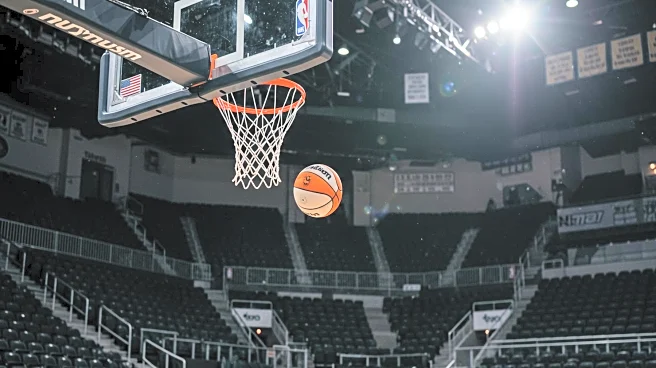Rapid Read • 8 min read
The WNBA has launched its inaugural Rivals Week, aiming to create excitement through targeted matchups. However, the effort faces challenges due to the league's condensed schedule and geographical spread of its 13 teams. The initiative, supported by the Changemaker Collective and sponsored by Ally, seeks to emulate the rivalry-focused events seen in other major sports leagues like the NBA and MLB. Despite the attempt to highlight 'classic and emerging rivalries,' the historical significance necessary for true rivalries is difficult to establish in the relatively young league. The WNBA's past rivalries, such as those between the Sparks and Sacramento Monarchs, have faded due to franchise closures, leaving the league to build new rivalries from scratch.
AD
The WNBA's Rivals Week is an important step in enhancing the league's visibility and fan engagement. By attempting to create rivalries, the league hopes to attract more viewers and sponsors, which are crucial for its growth and sustainability. However, the lack of historical rivalries and the logistical challenges of scheduling may hinder the effectiveness of this initiative. Successful rivalries can lead to increased ticket sales, merchandise revenue, and media coverage, benefiting both the league and its players. The effort to establish rivalries also reflects the WNBA's broader strategy to position itself alongside other major sports leagues in terms of competitiveness and entertainment value.
The WNBA will need to evaluate the success of Rivals Week and consider adjustments for future iterations. This may involve refining the scheduling to allow rivalries to develop naturally over time, rather than forcing them into a condensed timeframe. The league might also explore ways to enhance regional rivalries, similar to those in the NBA and MLB, to foster deeper connections with local fan bases. Stakeholders, including teams, players, and sponsors, will likely provide feedback on the initiative's impact, which could influence future promotional strategies and league policies.
The attempt to create rivalries in the WNBA highlights broader issues of league identity and market positioning. As the league continues to grow, it faces the challenge of balancing innovation with tradition, particularly in how it engages fans and builds its brand. The initiative also underscores the importance of historical context in sports rivalries, which can be difficult to replicate in newer leagues. Additionally, the focus on rivalries may prompt discussions about the role of media and sponsorship in shaping sports narratives and influencing public perception.
AD
More Stories You Might Enjoy










